In this step we will make the shoulder pad for our pagoda shoulder, and this is where we start to see the beauty of the contours of this shoulder come to life.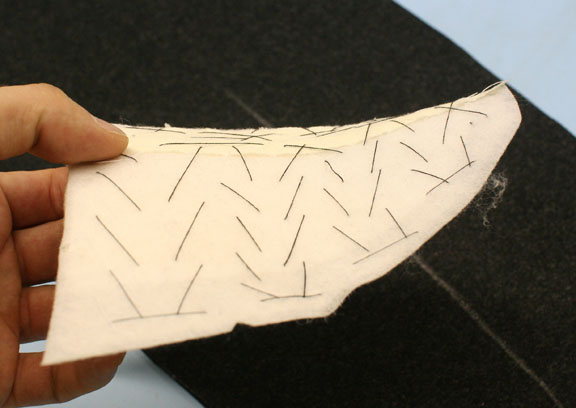
Shoulder pads are another controversial subject mainly due to the excesses of the eighties but they can play an important role. The high, square-shouldered figure should avoid them, while the sloping-shouldered figure will benefit from a bit of enhancement (the wonder-bra for the male shoulder). Whether you choose to wad the pad or not is up to you, but a cover at least should always be inserted; if nothing else, it protects the back of the shoulder from stretching while it is on a hanger.
My choice, for my body, is to pad the back of the shoulder, since the slope is considerable, and there is a hollow produced as the shoulder curves forward, away from the blade. A lot of manipulation goes into creating a pocket for the blade and to shortening the back scye, but the area could usually benefit from a little wadding to clean it up; most customers are unaware of the appearance of the back of the scye, not being in the habit of checking 3-way mirrors regularly, but most people could use at least a little bit. Keep in mind that the space we are creating in the front of the shoulder is for comfort and should not be stuffed full of cotton either.
The easiest way to make a good pad is to take apart a commercial one, which is usually pretty straight. There are often holes or notches on the pad to help you locate the approximate shoulder seam location, but you can also tell from the shape- the front being smaller than the back. Take the pad apart completely, then along the center of the pad, draw an arc from one end to the other, approximating the forward curve of the shoulder; one third from the neck on this line, draw up a line ¼” long- this can be longer or shorter, depending on the amount of shape you want. ¼” is usually plenty. Cut the top of the pad part along these lines (if there is a canvas piece under the cover and about the wadding, cut this piece as well).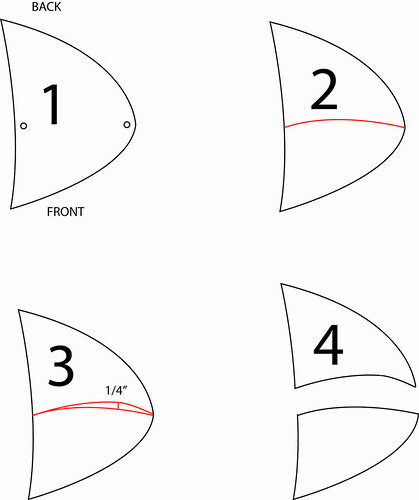
Using a feather stitch (some call it a baseball stitch), join the two cover pieces (if there was a canvas piece, baste it to the underside of the cover and stitch all layers together).
Cut a bias strip of pocketing and pad stitch it through all layers to cover the seam, cross stitch the edges flat.
Separate all the wadding that was in the pad.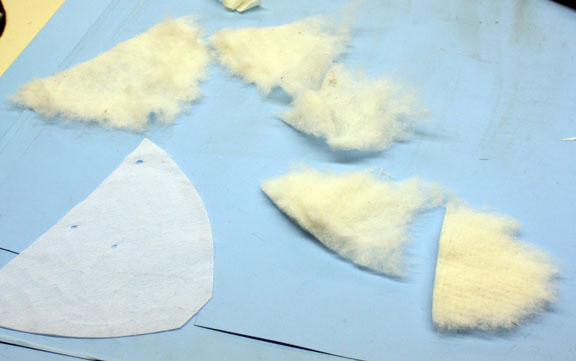
Build up the wadding with thin layers, according to the amount that you want; do not feel the need to use all the wadding- a little goes a long way. Note that the wadding for my pad is concentrated at the back.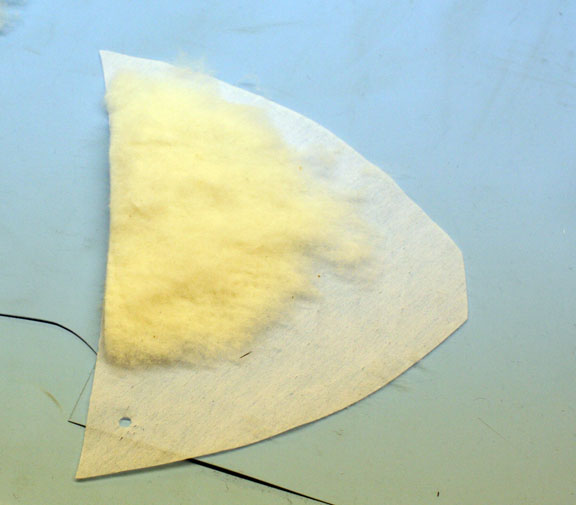
Place the cover over the wadding and baste down the center with a long, loose running stitch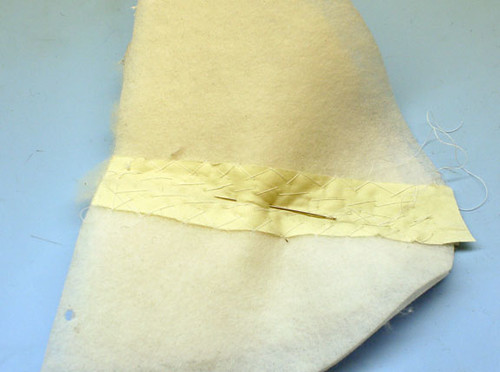
Now the shaping.
Keep the shape of the shoulder in mind as you pad stitch with fairly loose stitches to prevent lumpiness. There should be an upward curve when looked at from head on, but there should also be a concave curve in the front (curving toward the front) and a convex curve in the back, following the shape of the shoulder. You may need to give a little tug to the front edge, stretching the curve a bit, to get the right amount of concavity. If you do not hold the shape in like this as you are pad stitching the result will not be satisfactory; as you take each stitch make sure you are molding the pad into the desired shape. If at the end the shape does not look right, take it apart and do it again. It will be worth the effort.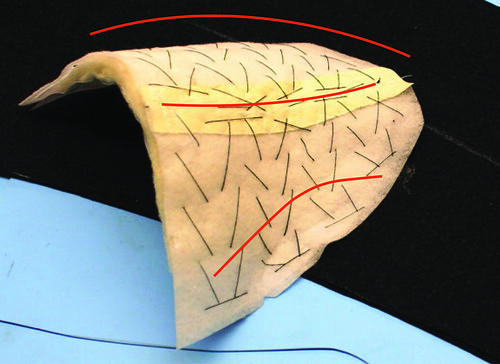
EDIT
Jordan makes a good point which I should have mentioned. If you are dealing with a low shoulder (and we usually are) and are making pads, it is far better to pad the low shoulder more than the higher one; it will make matching checks a little easier but, more importantly, will even out the appearance of the customer. Perkins devices were common for measuring shoulder inclination, but they are all but impossible to find now. Instead, grab one of the clinometer apps for the Iphone and turn your phone into a Perkins device.








4 comments:
Since the human body is seldom symmetrical, eg, a sloped shoulder on one side and a not so sloped shoulder opposite, it seems to me each pagoda pad must be made separately to create the semblance of balance. If the irregularities are evened out, does it make it easier to construct the coat for a tailor in terms of collarwork, pattern matching, etc, or is it just part and parcel of the fine craftsmanship required for bespoke tailoring?
JMB
PLEASE, do not use your Iphone app to measure!! AHHH. Call Phillip Perkins @ 210-684-6233. Tell him Natalie sent you!
For shoulder pads, I have read somewhere in your dissections where you use terminology such as wadding,'kotex' type, cotton, foam, and a welt type (that doesnt degrade?). I can't recall all of them, and what their relative strengths or weaknesses are.
Please do a post on shoulder pads (like the canvas types and whether they were full / half canvassed etc). It would really help to know what type of padding is used. Thanks!
A naive question: do decent enough, ready to use pagoda shoulder pads not exist?
Post a Comment